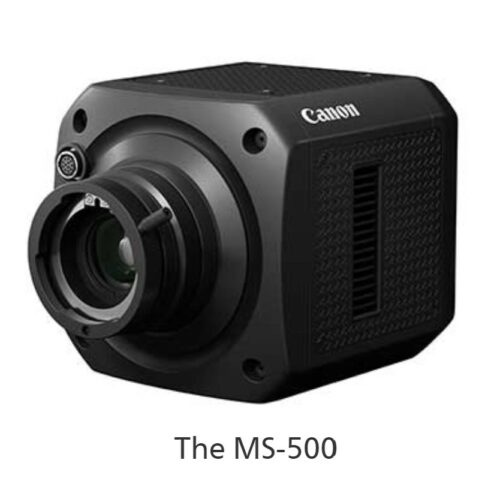A high-sensitivity camera with a 3.2 megapixel SPAD sensor offers low-light performance, suitable for high-precision monitoring in critical infrastructures and vast distances.

Canon’s MS-500, the world’s first high-sensitivity interchangeable-lens camera (ILC) equipped with a 1.0 inch Single Photon Avalanche Diode (SPAD) sensor featuring the world-leading pixel count of 3.2 megapixels. The company claims that the camera uses the unique attributes of SPAD sensors for exceptional low-light capabilities and pairs it with broadcast lenses optimised for telephoto-range clarity. Given these benefits, the camera is anticipated to be suitable for tasks like high-precision monitoring. The increasing need for precise monitoring systems is evident, especially in national borders, seaports, airports, train stations, power plants, and other critical infrastructure. These systems must detect targets under challenging conditions like darkness or vast distances, where human vision may falter. A practical application might include monitoring seaports during nighttime, identifying vessels several kilometres away, and ensuring meticulous surveillance within and around the seaport.
The press release says that the camera incorporates a 1.0-inch SPAD sensor, which reduces noise, offering clear, HD, full-colour imaging even in severely dim lighting. While conventional modern digital cameras mostly use CMOS sensors where each pixel gauges the incoming light over time, the readout process from this accumulated charge includes electronic noise, compromising image quality. This is especially true in low-light scenarios. Contrarily, SPAD sensors utilise “photon counting”. Here, photons entering each pixel are counted individually. When even a lone photon enters a pixel, it gets amplified roughly a million times and is converted into an electrical signal. This facilitates a zero-noise readout, a significant edge of SPAD sensors. Thus, the camera can function in absolute darkness, even without the faint glow from stars, detecting subjects under minimal light and producing vivid images.
Furthermore, the camera integrates a bayonet lens mount, compliant with BTA S-1005B standards, common in the broadcast lens domain. This compatibility means it can harness Canon’s broad spectrum of broadcast lenses, celebrated for their optical excellence, allowing the camera to discern subjects even kilometres away.
For more information, click here.






